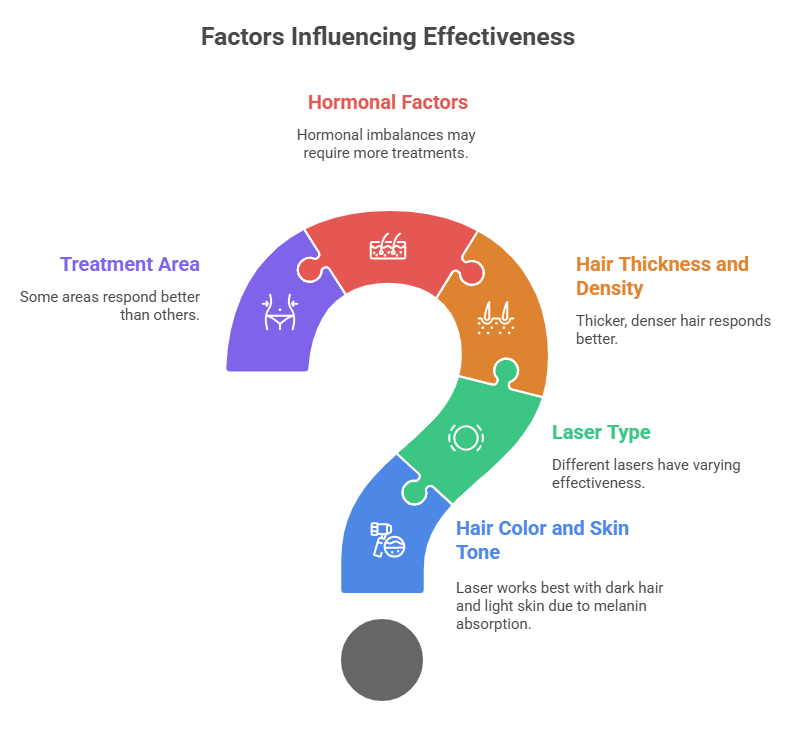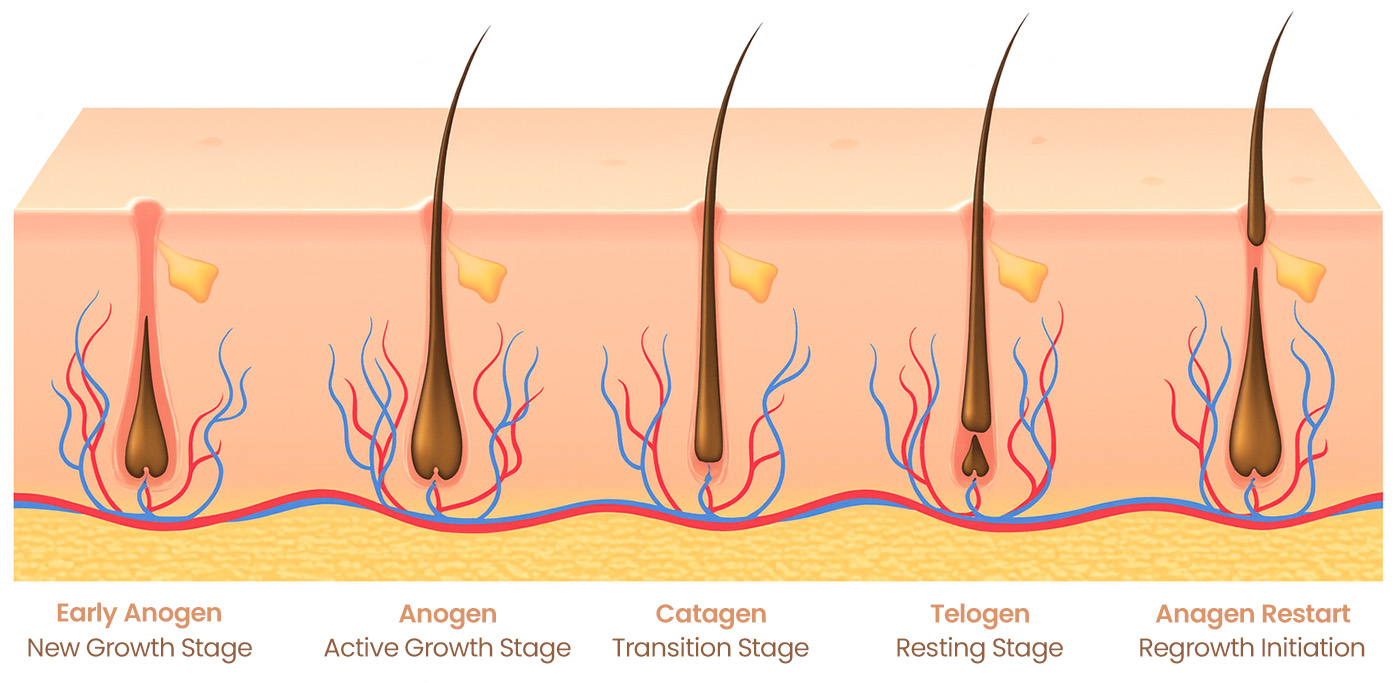IPL hair removal uses intense pulsed light to warm the follicle so hair grows back slower and finer. Treatments are common in salons and at home. Side effects are usually mild and short lived, though they deserve proper planning, clear consent and tidy aftercare.
Table Of Content
- What side effects are normal
- 01. The common, short term reactions
- Less common risks and how to avoid them
- 02. When settings or timing are off
- Who should pause or seek advice
- 03. Pre treatment checklist
- Is IPL as effective as laser
- 04. A quick comparison
- Aftercare that keeps skin calm
- 05. Simple, protective steps
- Considering professional laser instead
What side effects are normal
01. The common, short term reactions
- Warmth and redness: A sun kissed flush that fades in a few hours to a couple of days.
- Perifollicular bumps: Tiny goosebump like swelling around follicles that settles quickly.
- Itch or tingling: Light itch as skin cools and recovers.
- Dryness: Slight roughness, especially on shins and forearms, improved with a bland moisturiser.
- Shedding: Hairs loosen and fall out over one to two weeks which can look like pepper dots at first.
These effects mirror those seen with clinical laser hair removal as well, with typical redness and swelling resolving within two to three days according to Wikipedia.
| Side effect | How it feels | Typical duration | What helps |
|---|---|---|---|
| Redness | Warm, pink skin | Several hours to two days | Cool packs, fragrance free moisturiser |
| Follicle bumps | Raised dots, mild tenderness | One to two days | Gentle cooling, avoid tight clothing |
| Itch | Prickle or tickle | Hours | Emollients, avoid scratching |
| Dryness | Rough texture | Several days | Simple moisturiser, no acids or scrubs |
| Shedding | Stubbly hairs loosening | One to two weeks | Do not wax, you may gently exfoliate after forty eight hours |
Less common risks and how to avoid them
02. When settings or timing are off
- Burns: Usually linked to excessive energy, insufficient cooling, or treating recently tanned skin.
- Pigment change: Temporary darkening or lightening, more likely in deeper skin tones without careful selection.
- Blister or crust: Rare, generally from heat build up. Treat gently and keep clean.
- Eye injury: Always use proper eye protection. For clinic teams, certified safety goggles are essential.
Good practice reduces risk dramatically. Patch tests, honest skin typing, and correct spacing between sessions matter. England is introducing a licensing scheme for non surgical cosmetic procedures that covers laser and IPL. Details are on the GOV.UK website. Clinics often appoint an LPA for governance, which we support via our Laser Protection Advisor service.

Who should pause or seek advice
03. Pre treatment checklist
- Active tan or sunburn: Wait two to four weeks. Extra melanin means higher risk.
- Photosensitising medicines: Some antibiotics and acne treatments raise light sensitivity. Get medical guidance first.
- Pregnancy or breastfeeding: Many clinics defer treatment as a precaution.
- Skin conditions: Eczema, psoriasis, active infections and open wounds need clearance before treatment.
- Keloid tendency: Discuss risks with a qualified practitioner.

Is IPL as effective as laser
04. A quick comparison
IPL uses a broad light spectrum shaped by filters. Laser uses a single, specific wavelength aimed precisely at melanin. That precision translates to steadier heating at the target and fewer wasted photons. Courses tend to be shorter with professional lasers, and results are usually more uniform across skin tones, especially when a clinic has three wavelengths to choose from.
In practice, IPL is not as effective as true laser for long term reduction. Published comparisons list stronger reduction for diode and alexandrite laser platforms than IPL at several months, see the reduction rates. If you want the detail on methods, the Mayo Clinic has a concise explainer on how selective photothermolysis works.
Aftercare that keeps skin calm
05. Simple, protective steps
- Cool the area: Short, gentle cool packs help reduce warmth in the first few hours.
- Moisturise: Use fragrance free emollients for two to three days. Skip acids and retinoids.
- Shade and sunscreen: Avoid direct sun for a fortnight. Use high protection daily.
- No plucking or waxing: Shaving only between sessions so follicles remain present for the next treatment.
- Space sessions: Typically four to six weeks apart so you catch new anagen growth.
Considering professional laser instead
We feature laser hair removal systems that treat all skin tones with speed, comfort and very low running costs, with free training and certification included. Explore our range of laser hair removal machines or view individual systems: Nu TriLaze Plus, Nu eRays Plus, and Nu TriLaze Lite. For hands on evaluation, Book a Demo. For pricing, finance and lead times, head to Request Details.
Dr Majid Zarandouz
Majid holds a PhD in organic chemistry and has been working with laser systems for decades. His career began in the mid-1990s, when he started researching and developing laser-based technologies for medical and cosmetic applications. Over the years, he has combined scientific expertise with practical engineering to design machines that are effective, durable, and straightforward to use in real clinic settings. As director of the British Institute of Lasers, Majid continues to focus on producing equipment that meets professional standards while remaining accessible to businesses of all sizes.

